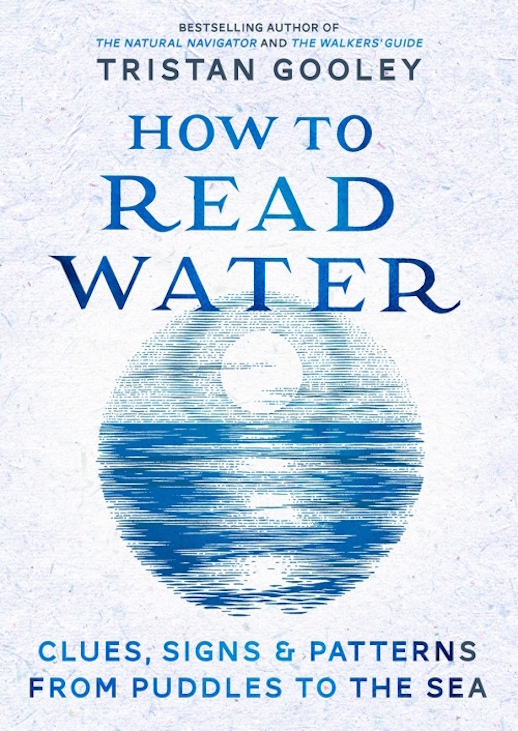 An extract from Chapter 5 of How to Read Water, published by Sceptre and out now. Available here in the Caught by the River shop, priced at £15.00.
An extract from Chapter 5 of How to Read Water, published by Sceptre and out now. Available here in the Caught by the River shop, priced at £15.00.
Words: Tristan Gooley
‘Are you OK?’ the short parking attendant asked from above her machine, which was more kindness than this species had shown to me in my life up to that point.
‘Yes, thanks. Very well,’ I replied and returned to my work. I pulled out a camera, not that I needed or wanted one. I have just learned that it calms people down in these situations and saves a long explanation that is not going to be believed anyway. My belly was now cold, after several minutes lying on the Knightsbridge pavement. Perhaps Knightsbridge was not the best location for this experiment. I probably looked like the world’s laziest terrorist, but then I wasn’t sure anywhere would be perfect. After much wriggling and squinting I stood up and stepped back, then squatted and peered. Finally, I found what I was looking for.
The Seismometer puddle is the puddle we can use to measure the slightest movements in the ground or air. Navajo Indians were reputed to be able to discern whether horses were approaching, even the number of horses, their speed, distance and whether they had riders on, just by placing their ears to the ground. The principle behind a Seismometer puddle is very similar. By tuning to fine vibrations in the ground, we can learn to predict things that the urban natives around us fail to spot. Like whether our bus is on its way or if the tube train has just passed under us. To understand how this puddle works we need to think about binoculars for a moment.
Have you noticed how difficult it is to keep a pair of binoculars fixed on a very distant, moving small object, like a bird, and how every time you breathe you seem to lose sight of it? You are probably aware that competitive rifle marksmen give as much thought to their breathing as to their rifle. The reason for both of these, is that the further something is away, the greater the effect a small angle change will have on what you see.
Coming back to the puddle on the pavement, if we look at our own reflection, it would take quite a major disturbance, a foot stomping in it or a strong gust of wind, to have much impact on that image in the puddle. But if we look at something very distant in the reflection, we will pick up much more subtle angle changes, which means that much tinier movements in the water’s surface become apparent. And the very best situation is when we line up something small, bright and far away.
One late spring dusk, walking along a country lane, I noticed that both Venus and Jupiter were visible in the puddles I passed. Seizing this Seismometer puddle opportunity, I made myself comfortable by leaning against a tree and began staring at the image of Jupiter in one of the larger puddles. Nothing happened for a few minutes, but then I noticed a faint disturbance in the water. A few seconds later it happened again.
At first I thought it must have been a small insect, but I’m familiar with most of the patterns they create and it didn’t quite fit. The pattern disappeared for a couple of minutes, but then returned again. This continued for a while and then finally I spotted the source of the tiny disturbance. A bat was swooping over the water and the faintest breeze from its wings was visible in the motion of Jupiter oscillating in the puddle.
Puddle reflections are underestimated, but there are at least a few who have sought their potential. The photographer, Brian Podolsky, captures the world seen through the reflections in puddles, an art he calls ‘puddleography’. He claims that puddles offer ‘a window to another dimension’. I’m not sure about another dimension, but if you seek out your own Seismometer puddle, find a distant object in the reflection, then you will be ready to detect the flight of a bat, an invisible train or four distant galloping cowboys.
Tristan Gooley joins us at Caught by the River Thames on Saturday 6 August. More info here.